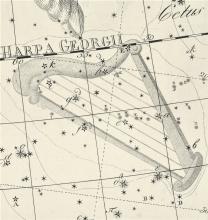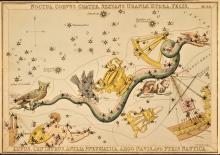Listen to today's episode of StarDate on the web the same day it airs in high-quality streaming audio without any extra ads or announcements. Choose a $8 one-month pass, or listen every day for a year for just $30.
You are here
Quadrantid Meteors
The stars are eternal — by human standards, anyway. But the constellations are not. That’s because the constellations were drawn by people. And what one person draws, another can erase.
Consider Quadrans Muralis. It’s the namesake for the year’s first meteor shower, the Quadrantids, because the meteors all appear to “rain” into Earth’s atmosphere from that direction. But you won’t find Quadrans Muralis on any modern starchart.
French astronomer Joseph Lalande drew the constellation in 1795. He named it for the wall quadrant — an astronomical instrument that was used to plot the positions of stars. He carved the constellation out of a mostly barren patch of sky that’s bounded by Boötes, Draco, and Hercules.
Although several of Lalande’s constellations caught on, this one didn’t. Yet the meteor shower still bears the name of the extinct constellation.
The shower itself should be at its best tomorrow night, with a peak rate of dozens of meteors per hour. If you trace the paths of the meteors across the sky, they all appear to originate in Hercules. But they can streak across any part of the sky, so you don’t need to look toward Hercules to see them.
The Moon is new today, so it’s completely out of view — it won’t dampen the fireworks. To give the Quadrantids a try, find a safe, dark viewing spot, away from city lights. Then bundle up and enjoy the show — a reminder of the changing landscape of the night sky.
Script by Damond Benningfield






